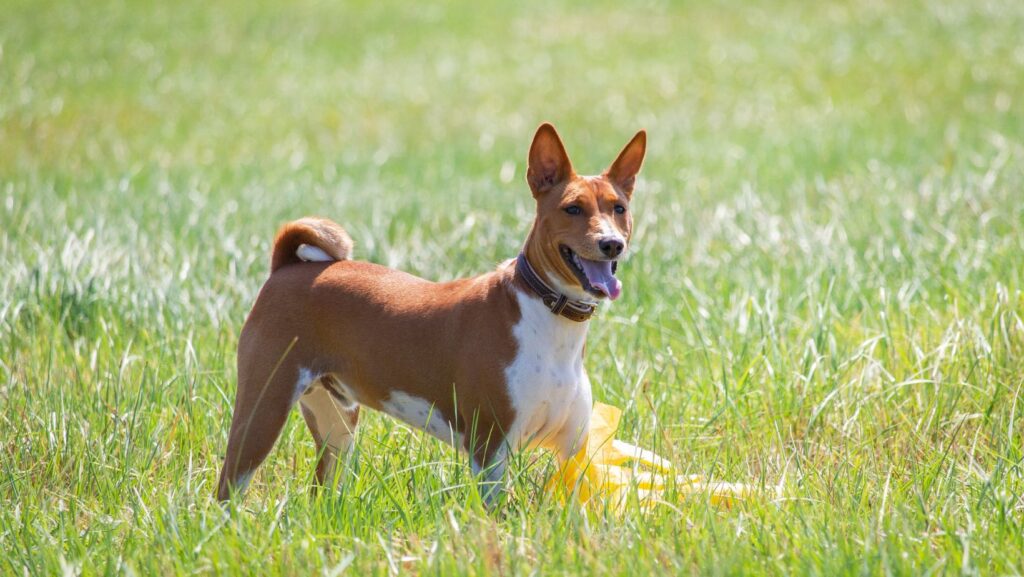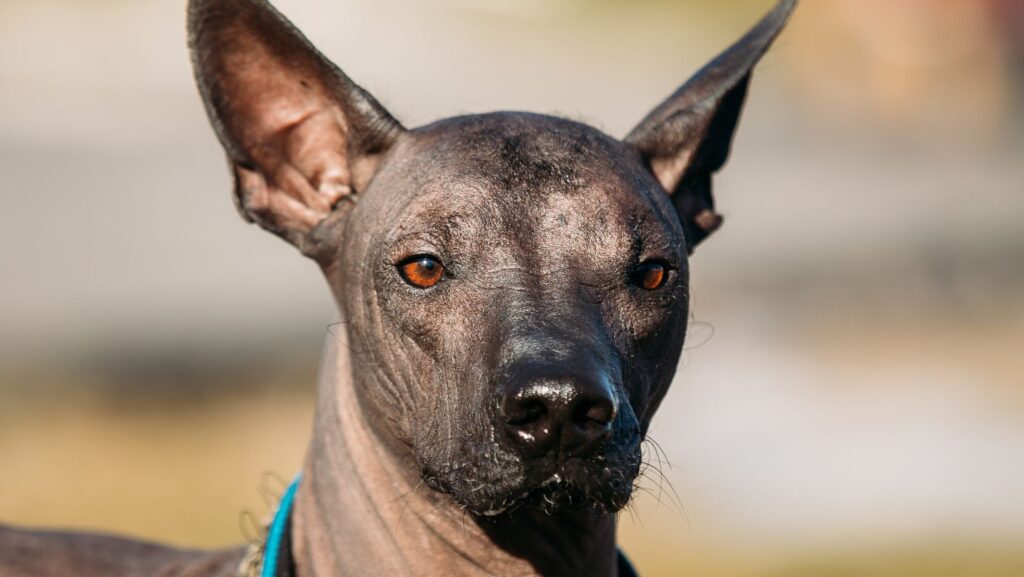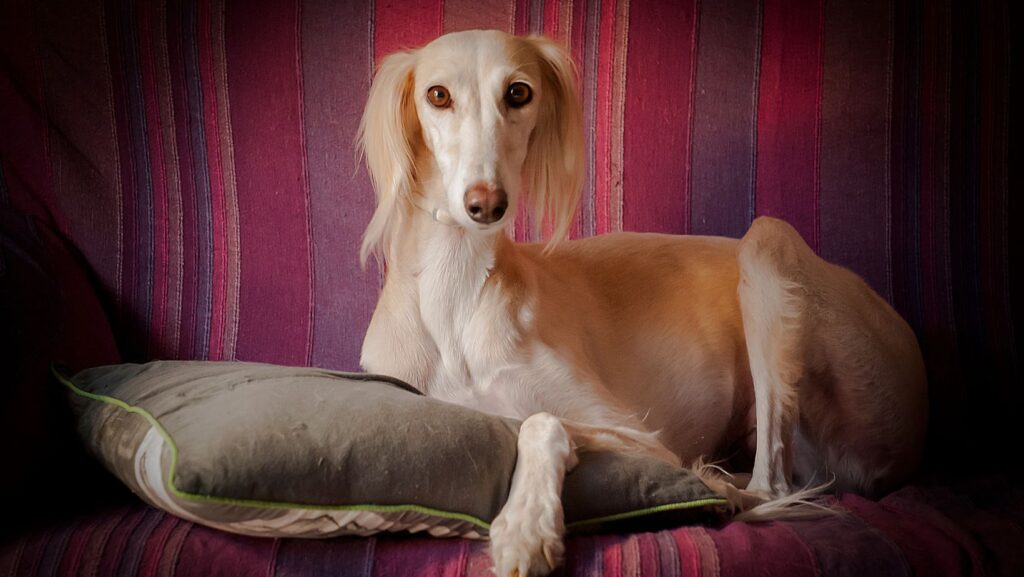In today’s article, we are going to talk about dogs with high prey drive. You might have seen some dogs have more hunting instincts than other dogs. This is what we call a prey drive. Today we will shed some light on dogs with high prey drive
Contents
- What is Canine prey drive?
- What are the behaviours associated with the prey drive in dogs?
- Prey drive Vs. Aggression
- Dogs With High Prey Drive
- Alaskan Malamutes: High Prey Drive Dog
- Afghan Hound: High Prey Drive Dog
- Rhodesian Ridgeback: High Prey Drive Dog
- Doberman Pinscher: High Prey Drive Dog
- Australian Cattle Dog: High Prey Drive Dog
- Airedale Terrier: High Prey Drive Dog
- Jack Russell Terrier: High Prey Drive Dog
- Basenji: High Prey Drive Dog
- Xoloitzcuintli: High Prey Drive Dog
- Siberian Husky: High Prey Drive Dog
- Bullmastiff: High Prey Drive Dog
- Saluki: High Prey Drive Dog
- Samoyed: High Prey Drive Dog
- How do I train my dog not to chase animals?
- 10 Dogs with low prey drive
- Final words
- Frequently asked questions
What is Canine prey drive?
Prey drive is a hunting instinct that lets the animals catch food. For instance, you may have seen dogs ripping off a stuffed toy, tugging games, and chasing a ball. However, you can channel this behaviour into play and help the dog release its prey drive in a safe manner.
This is a big issue in some dogs. Many owners say this because their dogs frequently chase farm animals, mice, and squirrels.
What are the behaviours associated with the prey drive in dogs?
Here are the activities that resemble high prey drive in dogs:
- Biting to kill
- Searching
- Chasing
- Hunting
- Stalking
For your canine, prey can be anything from toys, insects, sticks, and leaves to small animals. Moreover, prey drives in canines are displayed differently in different dog breeds. Also, if you left your canine with high prey drive left alone, he may be chasing anything that moves.
Prey drive Vs. Aggression
High-prey drives sometimes look like aggression. However, there is a significant difference between prey drive and aggression. Aggression is the result of strong emotions like fear and prey drive is just instinctive.
Additionally, aggressive canines take a step back from the object of aggression. On the other hand, a canine with prey drives goes close to the object. This is good for canine parents with high prey drives. This is because there is no emotional component involved. It is a fact that prey drive is easy to manage.
Dogs With High Prey Drive
Alaskan Malamutes: High Prey Drive Dog

- This is a wolf-like looking Alaska’s state dog
- It is been there for ages
- Alaskan Malamutes are the older sledge dogs with wolf ancestors.
- This is why the other smaller pets may not be safe with them
Afghan Hound: High Prey Drive Dog

- Afghan Hound originated in Afghanistan
- It is one of the oldest canine breeds
- This breed was used to hunt in mountains and deserts
- Afghan Hound is a 1-person canine and can not be a good guard dog
- It has independent thinking and is not motivated by food
Rhodesian Ridgeback: High Prey Drive Dog

- Rhodesian Ridgeback was bred to hunt lions in Africa because of its high prey drive
- That is why it may even occasionally go and hunt cats in the surroundings
- Therefore, owners must keep this breed always leashed or in an enclosed area.
- Moreover, the Rhodesian Ridgeback is a great guard dog.
Doberman Pinscher: High Prey Drive Dog

- This breed is from Germany and was originally bred to be a guard dog
- It is still not confirmed about its descents, however, it has ties with Terrier, Rottweiler, etc.
- You can see this breed in the military because of its high prey drive
Australian Cattle Dog: High Prey Drive Dog

- Australian cattle dogs are also known as Blue heelers or Queensland heelers.
- This breed is muscular, intelligent, hardy, and compact.
- Moreover, it has high energy, and work drive, and is best in herding, chasing, and hunting.
Airedale Terrier: High Prey Drive Dog

- This dog was bred to trap and track otters. Therefore, Airedale Terrier has a high prey drive
- This is the largest dog in the Terrier family.
- Airedale Terrier loves to dig and flush out rabbits and squirrels.
Jack Russell Terrier: High Prey Drive Dog

- Jack Russell Terrier was bred to hunt foxes. Therefore, it has a high prey drive from birth
- It is bad news if you want peace in your house with other pets. Moreover, it is a bad idea to get a Jack Russell Terrier if you want other pets at home too.
- This breed has the urge to hunt and show its courage and intelligence to the world.
Basenji: High Prey Drive Dog

- This breed is also known as a barkless dog from Africa
- It was discovered by Pygmy hunters from the African Congo
- Basenji was used to hunt other small animals in the native tribes. Therefore, it has a good prey drive
Xoloitzcuintli: High Prey Drive Dog

- Xoloitzcuintli is also called the Mexican Hairless Dog and was known for the comfy warmth it provides to the owner.
- However, it has a prey drive that makes it hunt a squirrel once in a while
Siberian Husky: High Prey Drive Dog

- The Siberian Husky used to pull sledges in the snow. Therefore, this is a strong breed with a lot of stamina
- Moreover, it has a fair prey drive that makes it prey on smaller animals like cats.
Bullmastiff: High Prey Drive Dog

- Bullmastiff is a cross of Bulldog and Mastiff.
- It is a fearless guard dog with a docile nature indoors.
- This breed is also known as the silent watchdog
- Moreover, it has a mellow temperament and a bit of prey drive that arises occasionally.
Saluki: High Prey Drive Dog

- Saluki is an aloof breed with a top speed of 40 mph
- It has a prey drive to chase small animals like rabbits and squirrels.
Samoyed: High Prey Drive Dog

- This breed is known for doing a lot of work. It includes tracking, hunting, herding, being a comfy cuddle buddy, etc
- This hardworking canine has a high prey drive and energy
- Samoyed is a tough dog. But it is also a happy and friendly dog.
Shiba Inu: High Prey Drive Dog

- This is an ancient Japanese canine breed
- This breed is native to Japan and is small in size
- The dog was bred to hunt wild boars and birds
Pharaoh Hound: High Prey Drive Dog

- This dog breed originated in 3000 BC in the Mediterranean
- The dog was used to chase and hunt small game.
- However, they are more seen with humans nowadays.
- Still, it has a high prey drive to hunt rabbits, squirrels, and other small animals.
Yorkshire Terrier: High Prey Drive Dog

- This is a popular breed, it is on the 1st place on the popular dog list in the United States
- It is the best companion for humans but still has a good prey drive that makes it very sharp.
- Yorkshire Terrier is a confident and smart breed that makes everyone forget about its small size.
Weimaraner: High Prey Drive Dog

- Weimaraner is also known as the Grey Ghost or Silver Ghost
- Originally, this breed was bred to handle large animals like deer, bears, etc in Germany.
- At present, you can still find Weimaraner hunting grounds
- This is a very graceful breed and is friendly and obedient with its owner
Irish Wolfhound: High Prey Drive Dog

- The Irish Wolfhound is the tallest breed and still is a lap dog.
- It is a very calm breed that loves to stay around humans
- However, it has a prey drive that can make it go and catch a creature roaming or passing by.
Whippet: High Prey Drive Dog

- This is a sweet-faced canine with a lightning speed
- Whippet is very gentle and carries good nature
- However, it loves to chase small animals around it
- Whippet is very friendly with kids. Therefore, it is a good choice for owners to have a Whippet
English Springer Spaniel: High Prey Drive Dog

- Some people believe that the English springer spaniel has a high prey drive and was only bred for hunting
- And this is true in this case. It has a high will to chase down small animals and hunt them
How do I train my dog not to chase animals?
The best thing to stop your pooch from chasing animals is to train it. If you have a canine with high prey drive, it is essential to make efforts to stop your canine from chasing other animals.
- Teach your canine recall – Recall command is when you call your canine’s name and he comes back. Teaching your pooch the recall command is great for its safety
- Teach your canine to leave – This command will help your canine to understand not to pick something. However, it can also tell the canine not to run off
- Distract your canine – If you find your canine getting ready to chase something, then immediately distract him with his toy, treat, or anything else
- Continuous training – Continuing positive training and reward-based training is the best thing to do for controlling your canine’s high prey drive. Moreover, the training should not stop after the pup becomes an adult. It must continue throughout your canine’s life.
10 Dogs with low prey drive
- Cavalier King Charles Spaniel
- Papillon
- French Bulldog
- Pug
- Havanese
- Maltese
- Bulldog
- Vizsla
- Pomeranian
- Great Pyrenees
Final words
As dog wonders, we mainly forget that our fur ball is a dog after all. Therefore, it definitely possesses an animal instinct which is responsible for its unpredictable nature. This is especially true for canines with high prey drive. It is completely normal and can be handled via positive and reward-based training.
I hope you enjoyed the article. I will be back soon with more interesting and informative pieces of writing. Till then, stay connected. Thank you.
Frequently asked questions
How do you know if your dog has a high prey drive?
chasing, Lunging, grabbing, soaring on a small animal. Signs of high exhilaration include upright and traumatic posture, quickening of movement, teeth chattering and drooling, and an upright wagging stiff.
Do all dogs have a killer instinct?
The procedure of domestication over hundreds of years has made this genetic drive quite latent in lots of breeds (however not all) and it could effortlessly be tapped into; all puppies will harbour the prey drive intuition inside them to various degrees.
Can you fix prey drive in dogs?
Dog schooling exercises can go a long way towards taming a canine’s excessive prey drive. Reducing distractions is fundamental to getting them to analyse and display commands. Without distractions they will be able to maintain the command for longer intervals of time, growing their destiny recall.